Mondrian contributed to the De Stijl movement and art group, founded by Theo van Doesburg. He evolved a non-representative form which he called Neoplasticism. This consisted of white background, on which he painted a grid of vertical and horizontal black lines and the three primary colors.
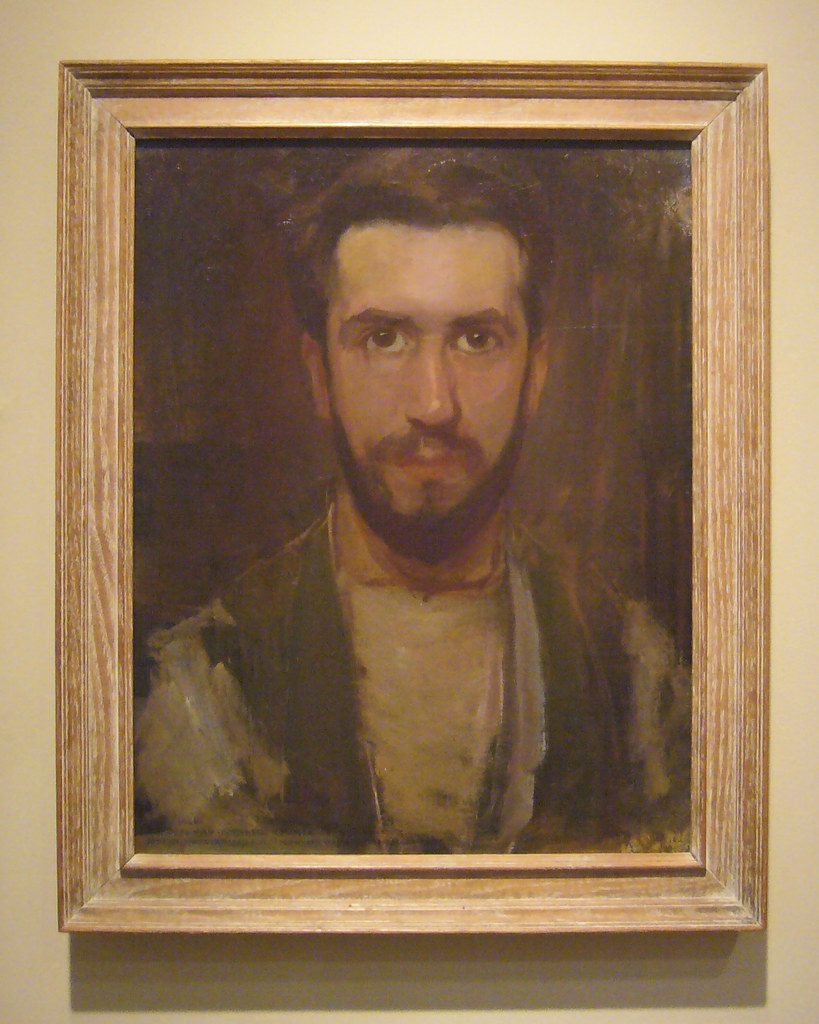
Image source: https://search.creativecommons.org/photos/f5a116cf-9424-4a31-a37d-90894219767d by Kent Wang
Important leader in the development of Modern Abstract Art
Mondrian and the critic T. v. Doesburg founded a periodical called De Stijl (The Style). Mondrian wrote several essays and became a key advocate of the group’s artistic philosophy, later known as Neoplasticism. They advocated pure abstraction or “non-objective art”, arguing that the universe could be reduced to the essentials of form and color. They simplified horizontal and vertical line compositions using only primary colors, along with black and white.

Image source: https://en.wikipedia.org/wiki/Piet_Mondrian#/media/File:Piet_Mondriaan.jpg
What is the artistic development of his works?
In his early paintings, there are several instances of a precise Post-impressionist, and emotional use of color. From Mondrian’s exploration of nature, he gradually began to simplify and abstract the colors and shapes he saw. This simplification and reduction process would continue until he even painting from nature.
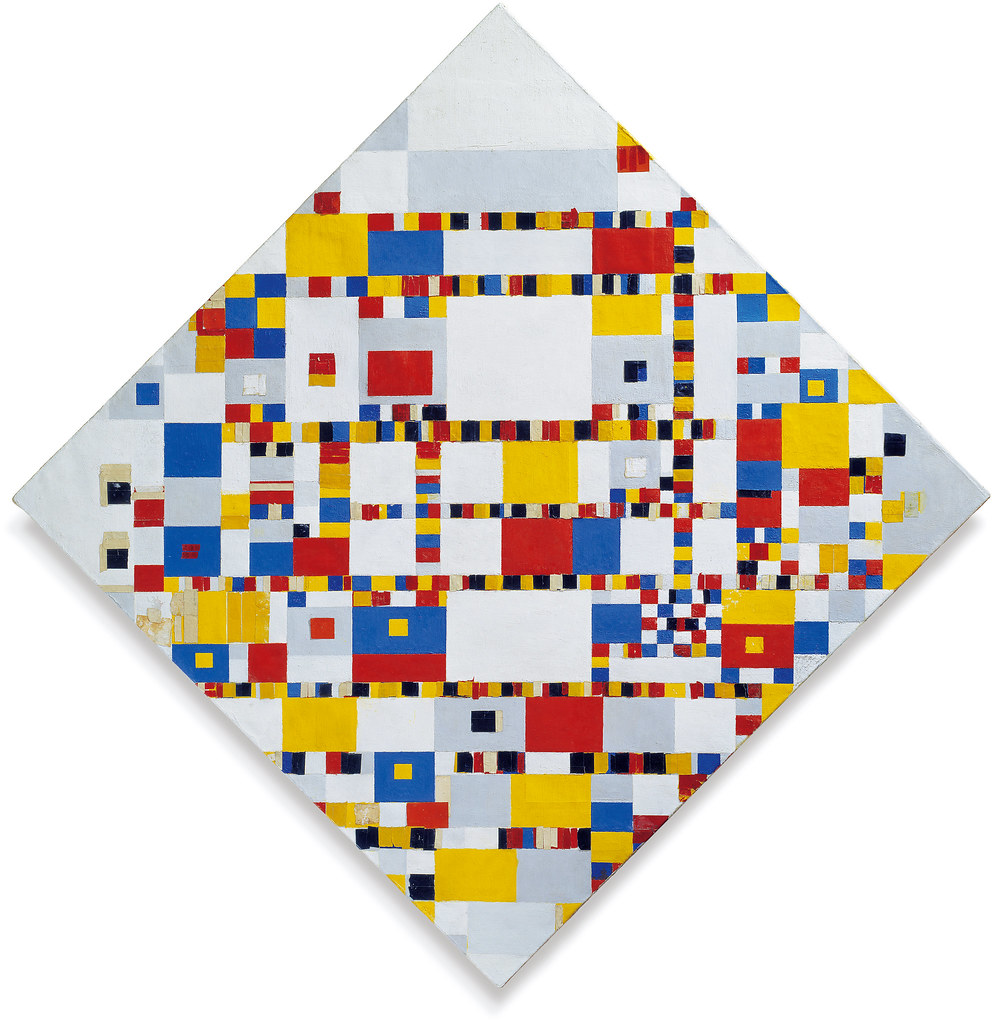
Image source: https://search.creativecommons.org/photos/1649f80c-7953-4762-8061-0b5cb08dd8e4 by Tulip Hysteria / Go to albums
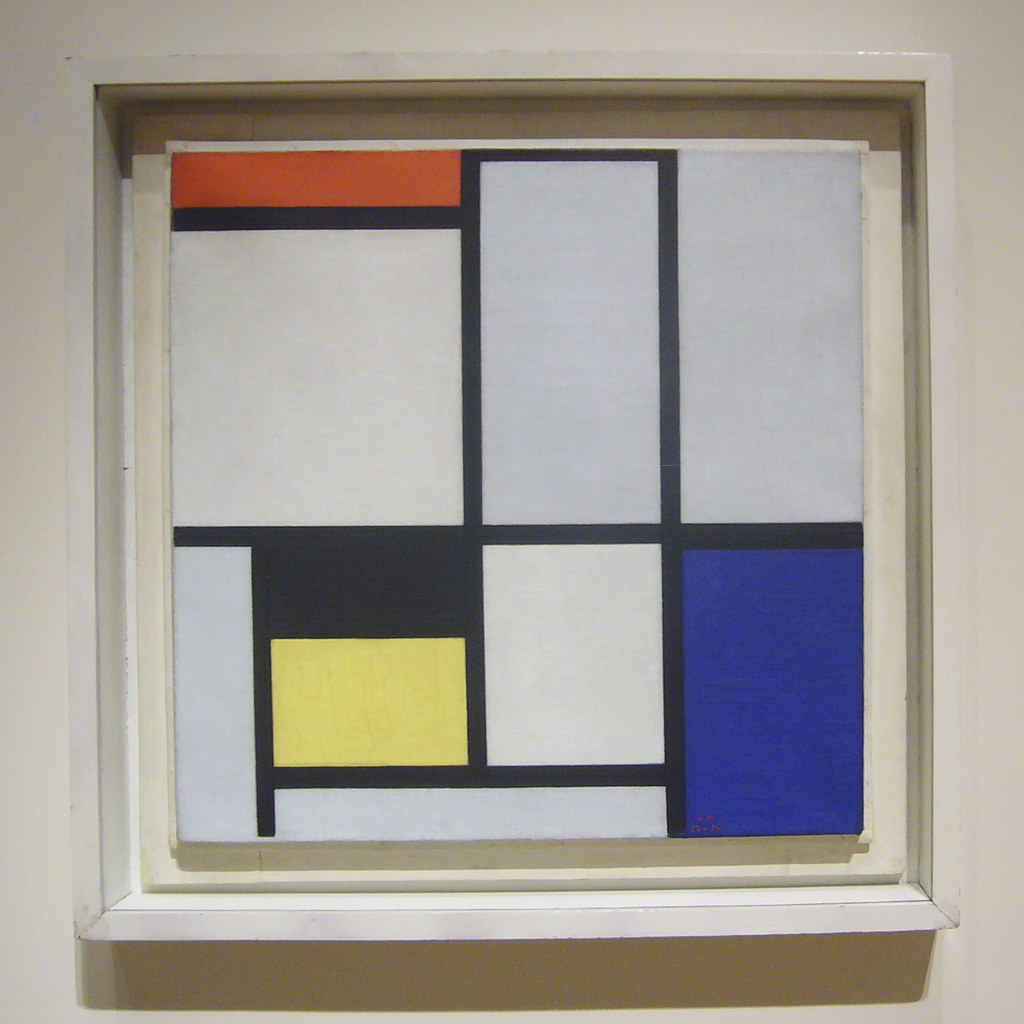
Image source: https://search.creativecommons.org/photos/ba80c9c9-494c-4b63-8bf0-1948a6722e6e by Kent Wang
Thanks to the rise of Cubism Mondrian was able to find a means to segment and reduce objects to their most basic forms.
Over time, he began creating all of his paintings using a grid-like format, painting squares, and rectangles of mostly solid colors.
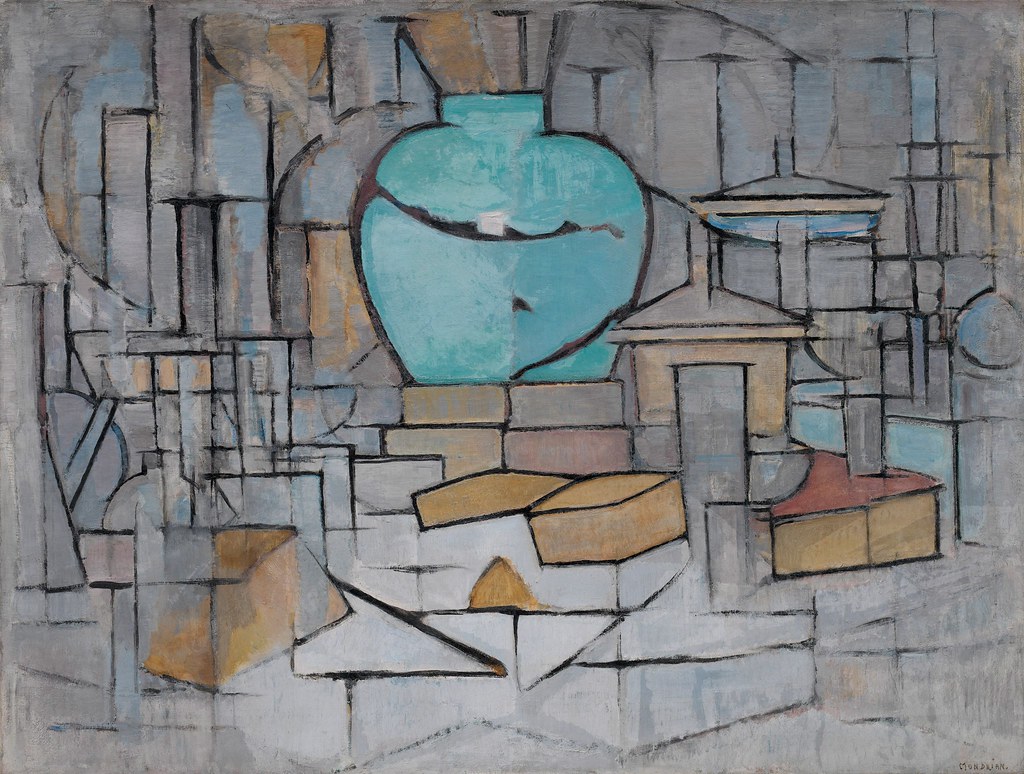
Image source: https://search.creativecommons.org/photos/f84e0710-fa78-482e-b629-39d688ab794c by Tulip Hysteria / Go to albums
His most famous abstract paintings include:
- Composition in Colour A, 1917 (Kroller-Muller Museum),
- Tableau No. IV with Red, Blue, Yellow and Black, 1924 (National Gallery of Art, Washington DC),
- Composition with Red, Yellow, and Blue, 1929 (Stedelijk Museum),
- Composition in Red and Blue, 1939 (Private Collection),
- Broadway Boogie Woogie, 1942 (Museum of Modern Art, New York).
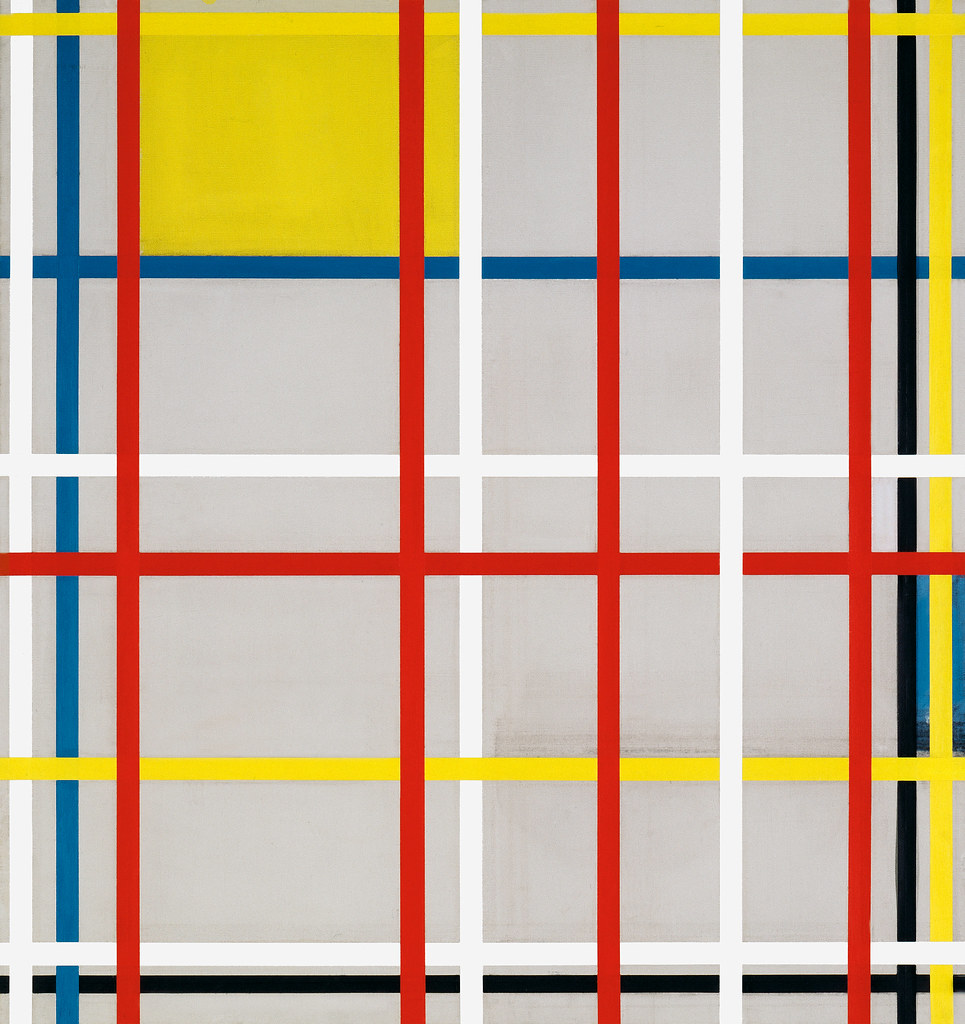
Image source: https://search.creativecommons.org/photos/33c2e84c-1e39-4970-bb21-cbc90cb87d0f by Tulip Hysteria / Go to albums
His Reductionist design style continues to inspire painters, stylists, and creative departments in advertising and packaging. In addition to being considered one of the most inventive painters of the 20th century, he is also considered the father of graphic design, founded on his basic grid structure.
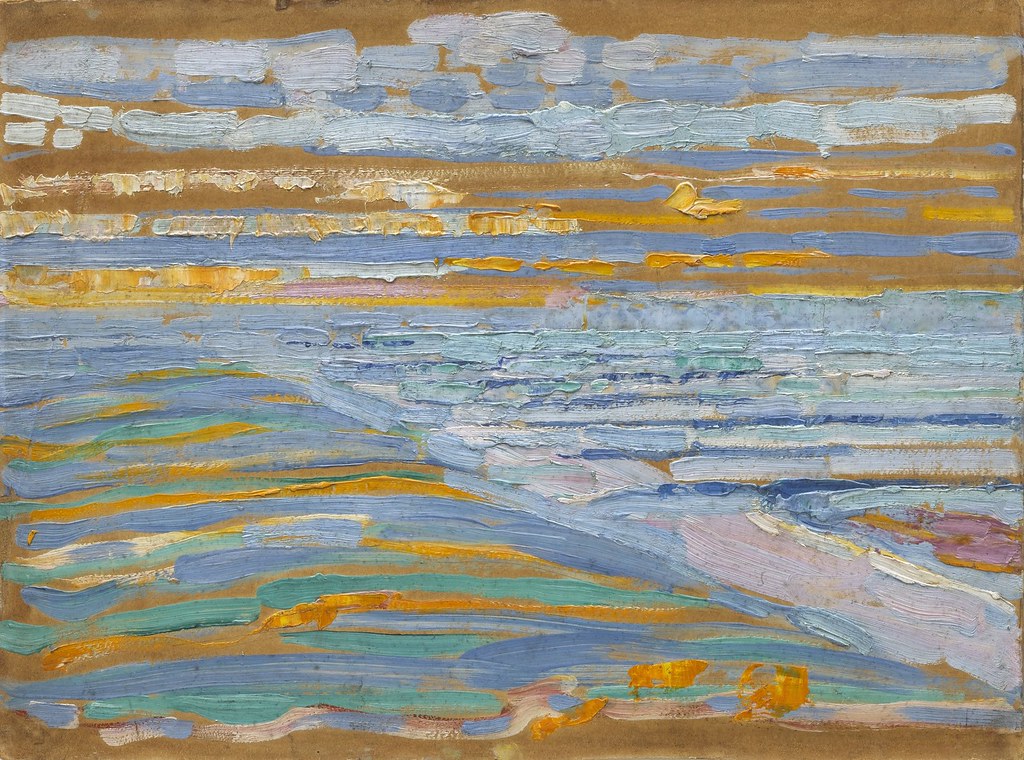
Image source: https://search.creativecommons.org/photos/94046f6b-fa9b-4d36-bae8-49e953c1b9d9 by Tulip Hysteria / Go to albums
Info source:
For more references, please also visit: www.jbdesign.it/idesignpro
